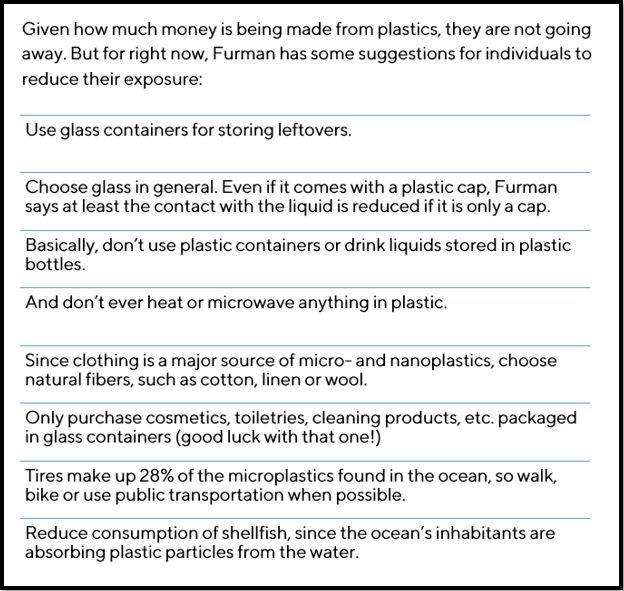Buck researcher David Furman is alarmed about new findings that show the problem is even worse than previously suspected
 People generally know that plastics are bad for the environment and possibly their health. That doesn’t seem to affect consumer spending much, given that a million plastic bottles are purchased worldwide every single minute. Don’t even get David Furman, PhD, Buck Associate Professor and Chief of the AI Platform, started on all the other ways plastics are infiltrating our lives, such as in clothing.
People generally know that plastics are bad for the environment and possibly their health. That doesn’t seem to affect consumer spending much, given that a million plastic bottles are purchased worldwide every single minute. Don’t even get David Furman, PhD, Buck Associate Professor and Chief of the AI Platform, started on all the other ways plastics are infiltrating our lives, such as in clothing.
Furman is sounding the alarm about the health risks from exposure to plastic, reeling from recent evidence documenting the impact on humans.
“I think most people have already heard that plastics are polluting us,” says Furman, but until recently, findings addressed microplastics, which are fragments that while small, are much larger than the particles that can now be detected accurately. “The interesting part comes when we start measuring smaller particles.”
Known as “nanoplastics,” hundreds of times smaller than a millimeter-sized pieces seem to be even more toxic than microplastics. Their miniscule size allows them to enter human tissues and pass through any barrier in the body. They go through the gut into the peripheral blood and even the blood-brain barrier is no match for keeping plastic particles out of the brain.
“Every time you open a plastic water bottle, you may think you are drinking purified, clean water but really you are poisoning yourself,” Furman says, noting that there are approximately a quarter of a million particles suspended in every liquid stored in a plastic bottle. Humans are also exposed to nanoplastics through food, polluted air, synthetic clothing or health and beauty products.
“When we look at nanoplastics, which we couldn’t measure before, we are now finding that the problem is much worse than anticipated,” he says. An Italian team, for example, recently has found accumulations of nanoparticles in people who died from heart disease and found a strong correlation between plastic burden and cardiovascular disease in that population. A recent review notes that although human studies are limited, cellular and animal studies suggest that exposure to plastic particles can cause inflammation, immune dysfunction, and cancer, to name a few of the effects. Another recent study found that people consume thousands to millions of plastic particles per year through protein-rich foods such as meat, poultry and fish.
 In the example with a quarter of a million particles in a bottle, nobody knows exactly how much of that will be detrimental for human health. “As a rule of thumb, we think it will be bad. Those particles have been found in plaques, in the brain, they are appearing all over the body and they have nasty consequences,” says Furman. “Is one bottle enough to cause damage? Are 10 bottles enough? Are 100 bottles enough?”
In the example with a quarter of a million particles in a bottle, nobody knows exactly how much of that will be detrimental for human health. “As a rule of thumb, we think it will be bad. Those particles have been found in plaques, in the brain, they are appearing all over the body and they have nasty consequences,” says Furman. “Is one bottle enough to cause damage? Are 10 bottles enough? Are 100 bottles enough?”
Furman has an idea for how to start to answer that question. “My first reaction is: let’s have a whole research program dedicated to understanding the relationship between nanoplastics and human health.” He is shifting his own research focus to exploring the problem. “I take this very seriously because it’s driving the most feared diseases that we don’t want to have,” he says.

